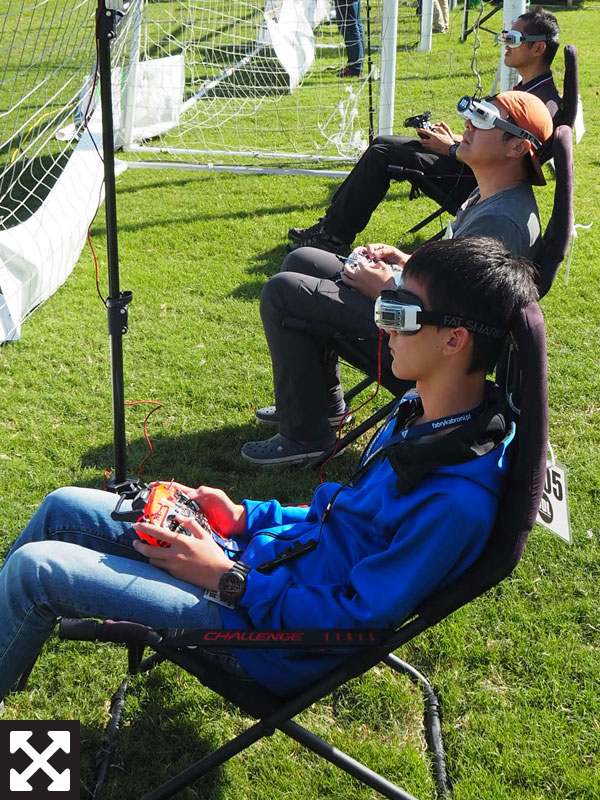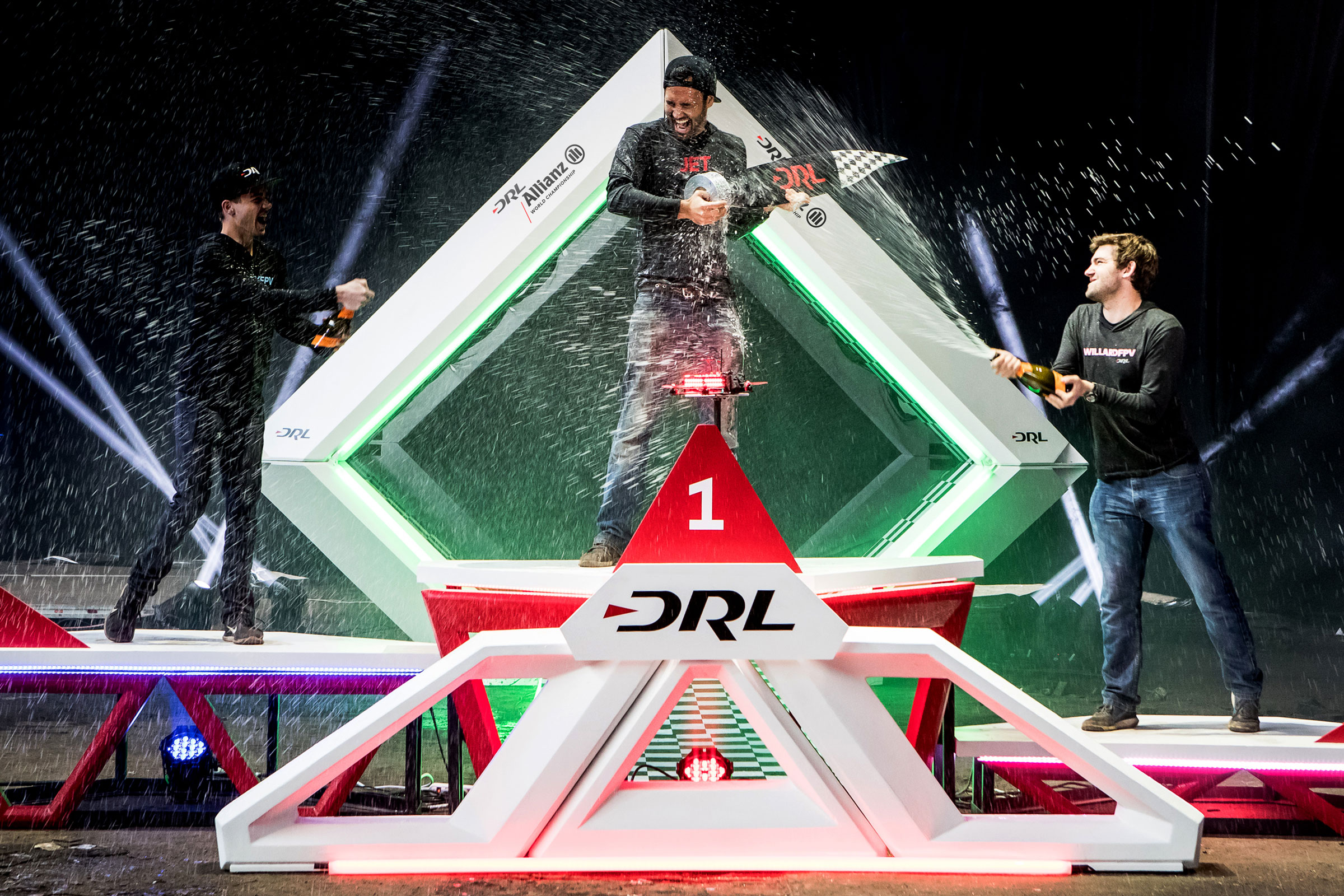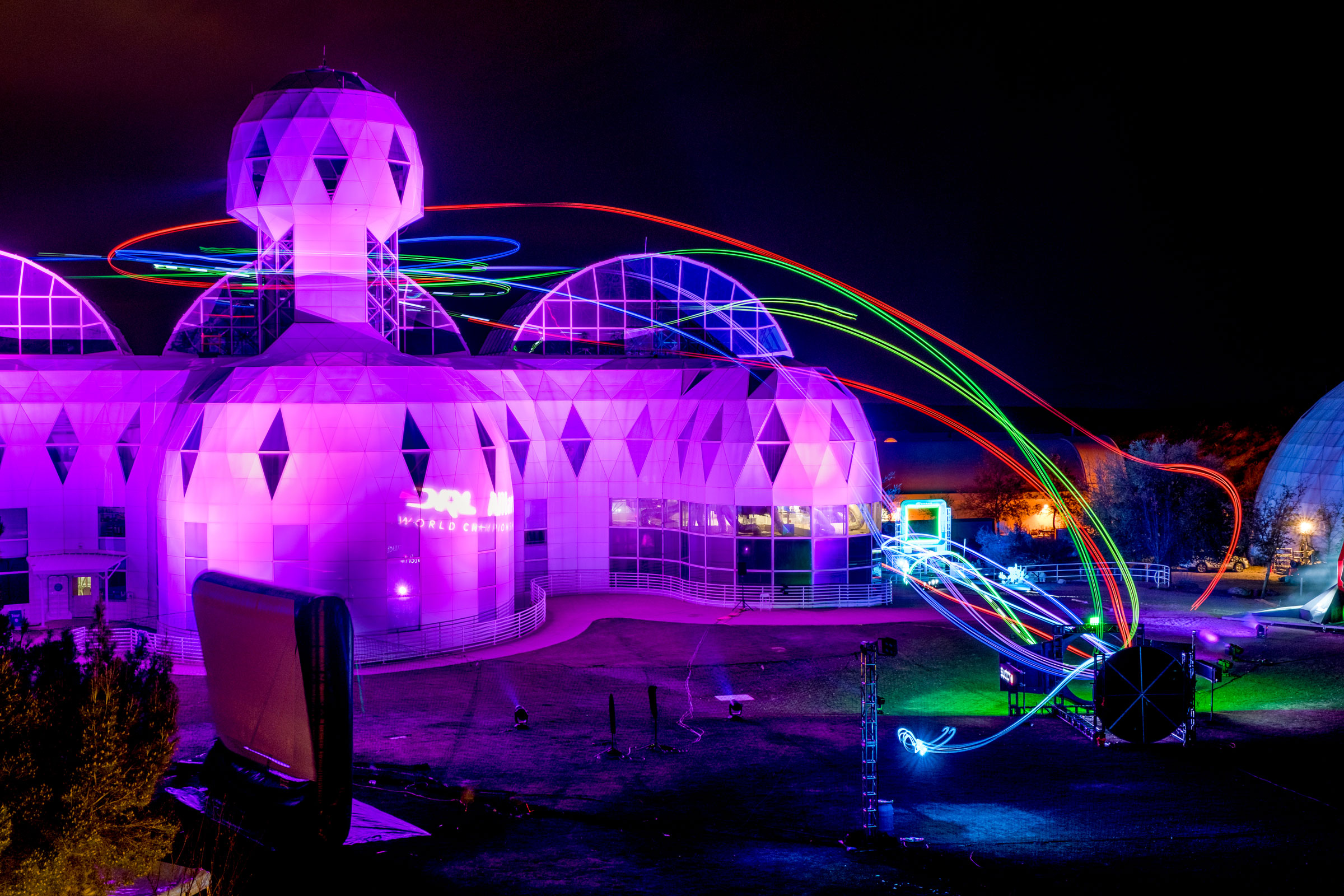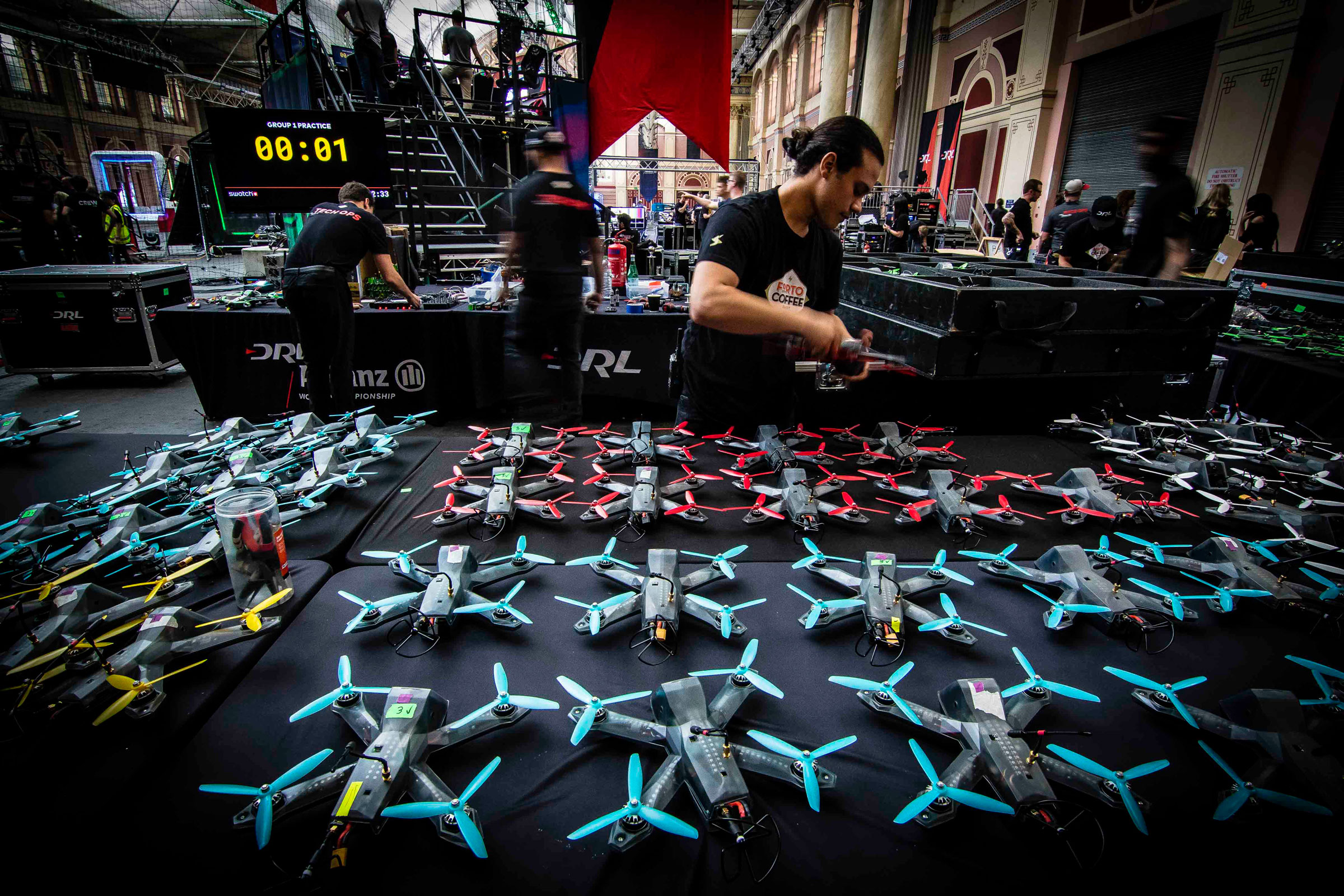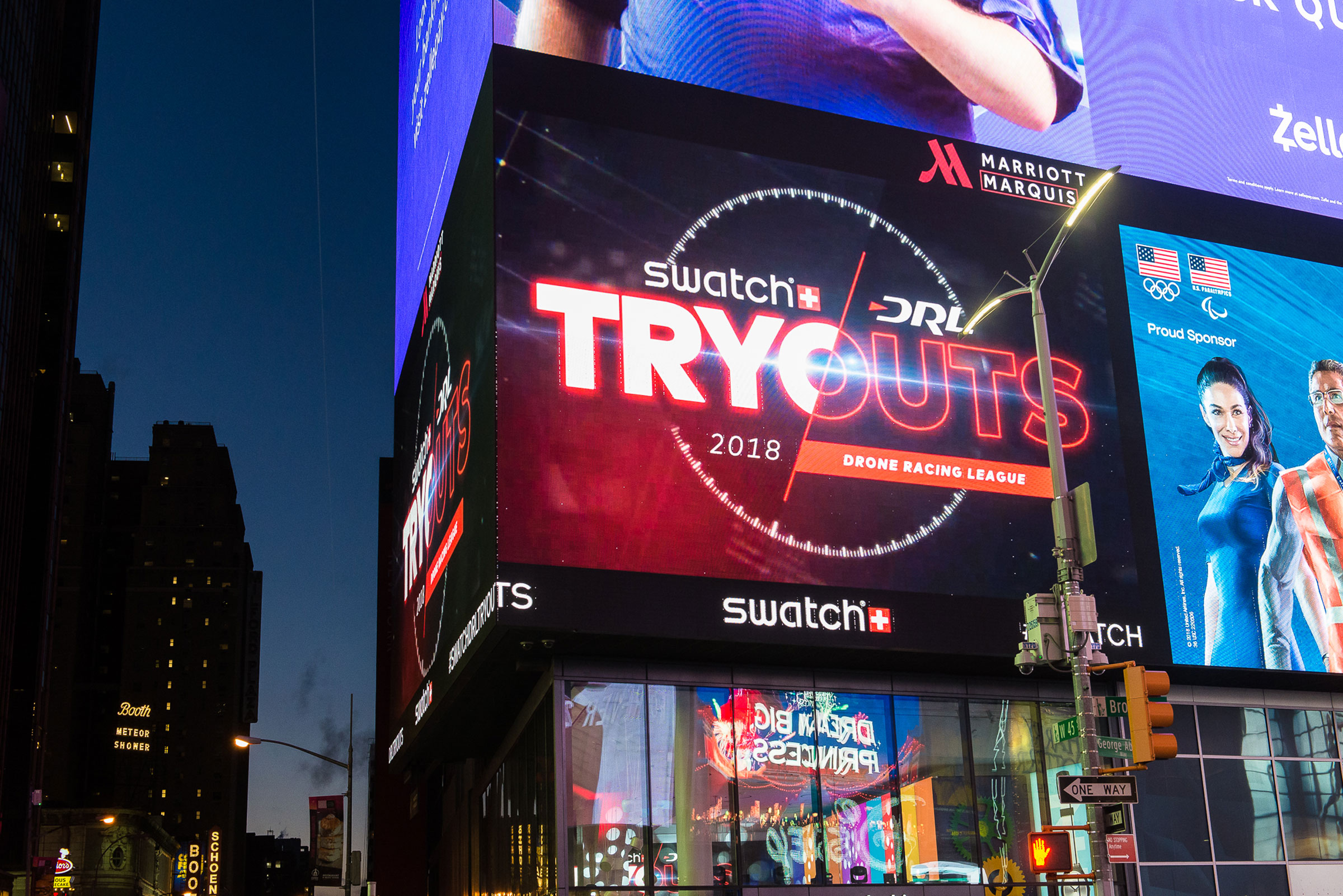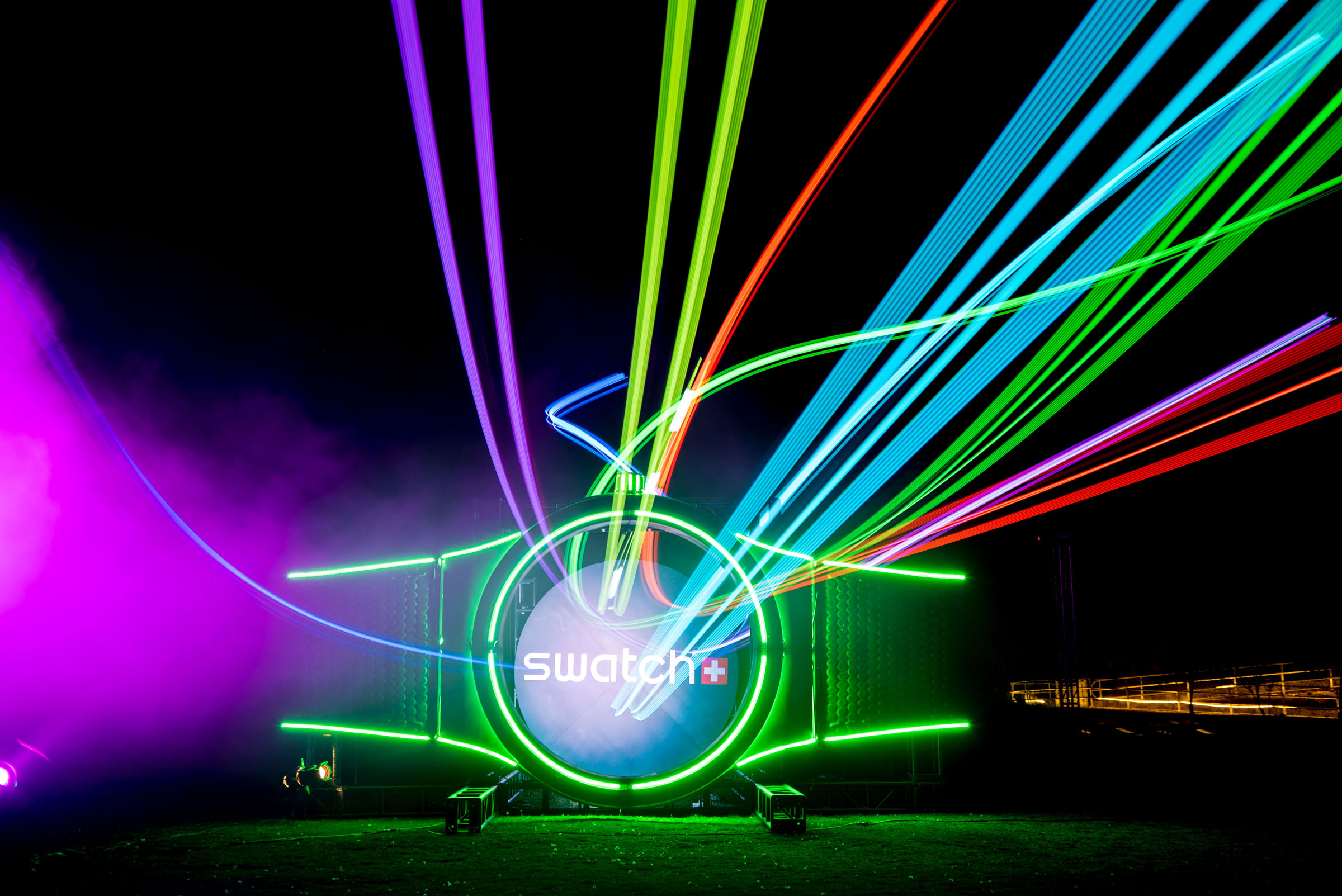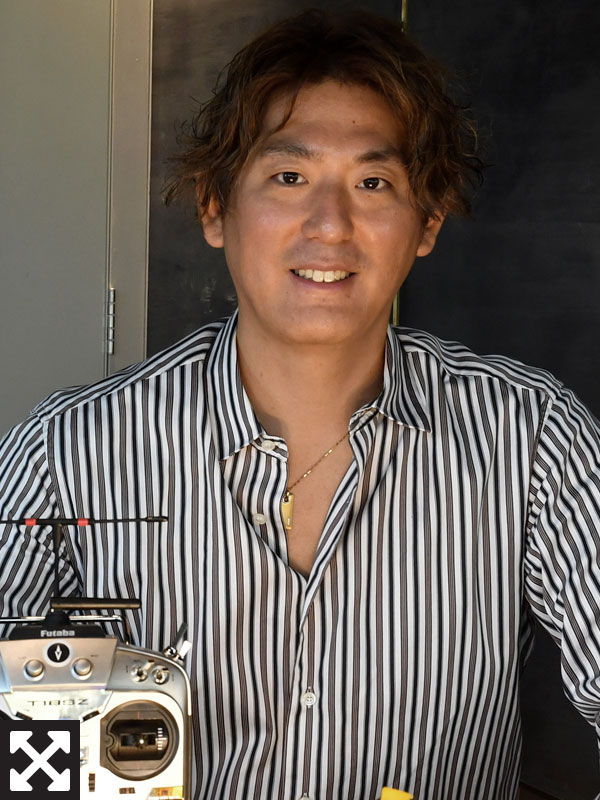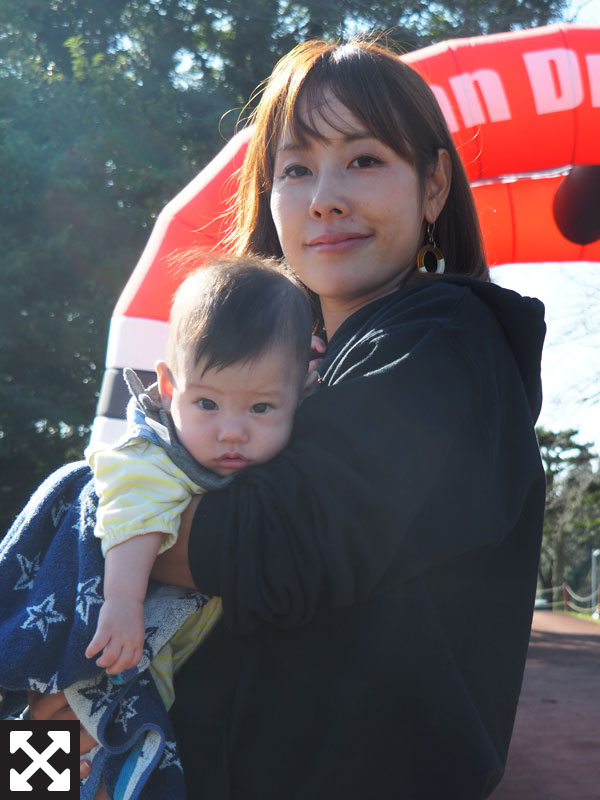LIFE
Top flight
Japan’s drone racers are go!A drone's on-board camera sends live footage to its pilot during a race. COURTESY OF JAPAN DRONE LEAGUE
Japan’s virtual top guns attempt to get more and more people involved in the sport nationwide
ANDREW McKIRDY
Staff writer
The tranquility of a warm autumn morning in Chiba Prefecture is broken by three shapes streaking through the sky above a rugby field.
They move so fast it is difficult for the eye to follow, flitting this way and that like angry dragonflies and filling the air with high-pitched shrieks.
A crowd stands watching below, protected by a row of soccer goal nets. In the middle sit three people in low-slung chairs, their eyes hidden by goggles and their face muscles twitching and reacting to pictures that only they can see.
Eventually one of the shapes — a racing drone, also known as a quad — zips through a canvas-covered gate, and the man sitting in the center chair smiles before lifting up his goggles and blinking into the bright sun.
“You can definitely get immersed,” says Andy Nguyen, a pilot competing in the sixth and final round of the Japan Drone League’s 2018 season at Resol Seimei no Mori in late October. “You feel more connected. In the goggles, you get a small screen and then the rest is black. It’s almost like sitting in a movie theater with no one else in there.”
The sport of drone racing first appeared in Australia earlier this decade and has since grown in popularity around the world. Rules and equipment vary, but the basic aim is to race a drone around a set course as quickly as possible in competition with other pilots, similar to full-size air racing.
Pilots fly drones equipped with cameras that transmit real-time video footage to screens inside their goggles, giving them a virtual first-person view of the flight. The world speed record for a racing drone currently stands at an eye-watering 163.5 miles per hour (263 kilometers per hour), although speeds of 80 miles per hour are more common during competition.
The sport has been described as a video game brought to life, and its appeal has not gone unnoticed in Japan. Several drone race organizations have emerged over the past few years, including the Japan Drone Racing Association (JDRA) and the Japan Drone League (JDL).
Drones await maintenance at the Japan Drone League event in Chiba Prefecture in October. MARK THOMPSON
“Each of our races usually has about 60 entrants,” says Toru Takahashi, one of four organizers in charge of JDL, which holds a series of competitions around the country over the course of a season to crown an overall champion and was founded in November 2016. “Those entrants are divided into three classes — open, expert and pro — and for each class we have a qualifying competition, semifinals and a final.
“Other racing organizations already existed, but they weren’t run very well,” Takahashi says. “The pilots would enter but the races themselves weren’t much fun to compete in. We wanted to provide something that the pilots themselves would enjoy taking part in.”
JDL competitions involve pilots racing their drones in groups of three around a gated course set up on an outdoor field. As batteries can only sustain two or three minutes’ flight, races are short. But the frantic action, liberally sprinkled with high-speed crashes, makes for an intense spectacle.
“Drones can fly and everyone wants to be able to fly,” says virtual pilot Tetsu Kitagawa. “Racing drones can fly fast and with freedom. They are very maneuverable — they can probably fly more freely than a bird can. It’s very exciting and it lets you experience a feeling you’ve never had before.”
Drone racing is not a cheap hobby. A drone itself will likely cost around ¥40,000, with goggles retailing for around the same price. Radio controllers can cost anywhere from ¥30,000 to ¥180,000, and the overall outlay has had a shaping influence on JDL’s demographic.
“It takes money to race drones, so younger people can’t afford it,” Takahashi says. “Even if they want to get involved, they can’t. So it’s mostly centered around people in their 30s and 40s who have a bit of money to spend. You get some elementary school students whose parents help out with the costs, but we don’t get many university students or other people in their 20s.”
Despite its prohibitive cost, drone racing is able to accommodate participants in ways that other sports cannot. JDL organizer Daisuke Baba took it up after he shattered his leg competing in a Supercross motorbike race, leaving him unable to move for a six-month period that cost him his job as a truck driver.
“If you can see and you can use your hands, you can race a drone just the same as anyone else,” Baba says. “I’d love more people with disabilities to come to our races. We want to create an environment where they feel comfortable racing. We have a guy who comes to our races who can’t hear, so when the race starts we tap him on the shoulder and he races just like the others.”
JDL offers a ¥1 million prize for the pilot who finishes top of the overall season standings, but it is far from being a professional organization. Only a handful of pilots in Japan make their living solely from drone racing, and the sport remains a niche activity among a small dedicated community.
At the other end of the spectrum is Drone Racing League. Launched in 2016 in the United States, the visually slick and fully professional circuit is broadcast on a host of major channels worldwide, including ESPN and Sky Sports, and boasts sponsorship deals with brands such as BMW, Swatch and Allianz.
“We broadcast in over 70 different countries, we’ve had tens of millions of people watch our broadcasts online and we have events where thousands of people show up,” says DRL founder and CEO Nicholas Horbaczewski. “We had our world championship and we had over 4,000 people on-site watching the racing.
“It is absolutely incredible to come and watch a live drone race. The drones are powerful, they are loud, they are fast. DRL drones are covered in hundreds of bright LED lights so they streak across the sky like a fireball. So you will see something that is incredible. Most of our fans when they come to a race, they enter it like this is a real-life video game. Or this is ‘Star Wars’ brought to life. It really, truly feels like something out of a science-fiction movie or a video game.”
DRL has held races this year in the United States, France, Germany and Saudi Arabia, using well-known venues such as London’s Alexandra Palace, Munich’s BMW Welt exhibition center and the home stadium of the Miami Dolphins football team.
“We would love to hold a race in Japan,” Horbaczewski says. “We have a lot of fans in Japan, and we have a number of social followers from there. We’ve been working for some time to figure out the best way to come to Japan. We’d be thrilled to come over there and put on a race in a really iconic location, and show everyone in Japan just how incredible this sport can be and just how incredible these drones can be.”
Japan’s drone racing scene cannot come close to competing with DRL, but the country does have a presence on the international stage. In April, celebrity entrepreneur Takafumi Horie co-founded DMM Raiden Racing, a six-person team featuring five Japanese pilots that competes in Drone Champions League, a Europe-based professional circuit of a similar standing to DRL.
“Only four people organize JDL events, but DCL has around 100 staff members,” says Raiden captain Junichi Goto, also a former JDL champion. “They have mechanics for the machine parts, engineers for the radio signal, people collecting and checking the drones. On top of that they have people operating the cameras and the broadcast. They have a lot of people and a lot of sponsors. It’s a completely different scale. It’s not a hobby, it’s a sport.
“Even if there is an effort to create something similar in Japan, first you need to get sponsors interested. I think it will take a bit of time to get there, but I wouldn’t say it’s impossible.”
Hanging heavily over Japan’s attempts to reach that level are the country’s strict drone laws, which have been tightened in recent years amid questions of security and privacy.
In the zone: Pilots take part in a Japan Drone League race in Chiba Prefecture in October. MARK THOMPSON
A drone is defined by the Ministry of Land, Infrastructure, Transport and Tourism as an unmanned craft that can be controlled remotely, weighing more than 200 grams. Anyone wishing to race drones that exceed this weight limit and are controlled wearing goggles must first obtain a ham radio license and apply to the ministry for permission to fly.
The ministry has also produced a map of areas where flying drones is prohibited, including areas designated as “densely inhabited districts.” These are defined as areas with a population density of 4,000 people per square kilometer, rendering practically the whole of Tokyo off-limits.
“It has a huge impact on drone racing,” Takahashi says. “Absolutely massive.
“It’s not something that everyone can just pick up and do. The point of entry has become narrower. There are people who want to do it but haven’t got their qualifications yet. If you compare it to other countries, the requirements are greater and the number of participants is lower. If Japan had more of an environment where people could just casually pick it up and get involved straight away, I think it would be as popular as it is now in other countries.”
Japan’s laws also limit the number of drones that can fly at any one time to three, forcing race pilots to spend long periods sitting under a tent canopy as they wait for their turn.
“In other countries you’re allowed to fly four, five or eight at the same time,” Takahashi says. “We want to attract lots of people to come and have fun and make it a big event, but we can only have three at a time.”
Nguyen, an American who has lived in Tokyo for the past five years and began flying drones as a hobby in November last year, gets around the regulations by waking up early once a week to take the 5 a.m. train out of the city to practice. He also flies Tiny Whoops — relatively cheap, ultra-small drones weighing around 20 grams that can be flown indoors and are not subject to the same regulations as outdoor racing drones.
Once the JDL’s final event of the season arrives, though, all paperwork has been dealt with and everyone is focused on the day ahead.
A community spirit is palpable as the entrants chat happily, examine each others’ drones and watch races on a TV screen showing the pilots’ in-goggle video feeds. Race commentator Takahashi hoots with delight over the loudspeaker as yet another drone crashes into a gate and careens to the ground.
At the end of the Sunday morning qualifying round, 10-year-old Fuga Kamizeki leads the way with the fastest time.
“The controls are like a video game,” he says, before dashing off to play with the other children on his motorized scooter. “I’m aiming to be the No. 1 pilot in the world.”
Mai Shiraishi, one of only two female pilots from a field of 62 entrants, has failed to qualify for the semifinals. She explains that she wasn’t able to practice on the Saturday, but she is hoping to do better when she represents Japan at the FAI Drone Racing World Cup two weeks later in Shenzhen, China.
“I think more women will start to get involved in drone racing,” Shiraishi says. “I want to help increase the number of women taking part.”
Nguyen advances to the final of the open-class competition, only to crash straight out of the gate. He can only watch helplessly through his goggles as his drone whirrs and twitches on the grass, but he is happy that his appearance in the final has gained him promotion to the expert class next season.
The winner of the top-level pro class final is Takafumi Oka, a poker-faced young man who also carries off the ¥1 million prize money awarded to the overall season champion.
“I’m not thinking about joining an overseas league just yet,” says Oka, who is employed by a web marketing company that lets him race drones full time, and also gets income from sponsors and prizes. “There are lots of different types and I haven’t thought about which one I would like to join. I’m just concentrating on competing in races overseas and working hard so I can win.”
At the end of the day, everyone strolls out onto the field to help tidy up the gates and banners as the dragonflies reclaim the late afternoon skies. The season is finished for another year, and JDL organizer Atsushi Nakamura reflects on what he likes about the sport.
“It’s a great hobby,” he says. “Take skiing, for example. With skiing, you spend more time on the ski lift than you do actually skiing. With drone racing you have to spend a long time making the drone, but that’s so much fun.
“When you fly a drone you only get about three minutes, which is a very short time — just like skiing. But when you’re not actually flying them, you’re speaking with friends in a nice natural setting, going for dinner once you’re finished — the whole thing is fun. And within that you have the race, with everyone coming to compete. That’s the beauty of drone racing.”

